
Alaskan Russians may refer to Alaskan Creole people, an ethnic group native to Alaska; or Old Believers, a community of religious Russians who settled in Alaska's Kenai Peninsula, notably Nikolaevsk; or Russian Americans in Alaska.

Alaskan Russians may refer to Alaskan Creole people, an ethnic group native to Alaska; or Old Believers, a community of religious Russians who settled in Alaska's Kenai Peninsula, notably Nikolaevsk; or Russian Americans in Alaska.
The Russian-American Company was formed in 1799 with the influence of Nikolay Rezanov for the purpose of hunting sea otters for their fur. [1] : 40 The number of foreign Russians (non-Alaskan Creoles) rarely exceeded 500 at any one time. [1] : xiii
In May 2023, the Old Believers community of Nikolaevsk, Alaska, consisting of fr. Nikola Yakunin, his son Deacon Vasily Yakunin and about 20 families decided to join the Russian Orthodox Church Outside of Russia (semi-autonomous part of Moscow Patriarchate) on the rights of the edinoverie. It was reported that the community was largely americanized and it turned out to be problematic to pray in the already almost forgotten Church Slavonic language. They planned to build a new church for the community in Homer, near Nikolaevsk, because the old church will remain under the jurisdiction of the Russian Orthodox Old-Rite Church according to US law. [2] [3]

The Russian Orthodox Church, also officially known as the Moscow Patriarchate, is an autocephalous Eastern Orthodox Christian church. It has 194 dioceses inside Russia. The primate of the ROC is the patriarch of Moscow and all Rus'.

From 1732 to 1867, the Russian Empire laid claim to northern Pacific Coast territories in the Americas. Russian colonial possessions in the Americas were collectively known as Russian America. It consisted mostly of present-day Alaska in the United States, but also included the outpost of Fort Ross in California. Russian Creole settlements were concentrated in Alaska, including the capital, New Archangel, which is now Sitka.
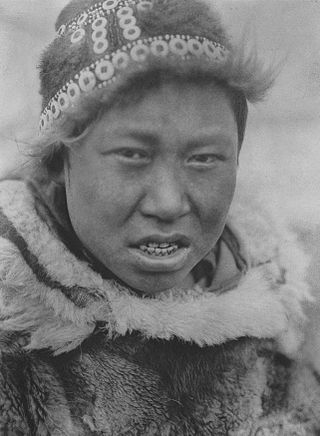
The Yupik are a group of Indigenous or Aboriginal peoples of western, southwestern, and southcentral Alaska and the Russian Far East. They are related to the Inuit and Iñupiat. Yupik peoples include the following:

The City of Unalaska is the main population center in the Aleutian Islands. The city is in the Aleutians West Census Area, a regional component of the Unorganized Borough in the U.S. state of Alaska. Unalaska is located on Unalaska Island and neighboring Amaknak Island in the Aleutian Islands off mainland Alaska. The population was 4,254 at the 2020 census, which is 81% of the entire Aleutians West Census Area. Unalaska is the second largest city in the Unorganized Borough, behind Bethel.
Nanwalek, formerly Alexandrovsk and later English Bay, is a census-designated place (CDP) in the Kenai Peninsula Borough, Alaska, United States, that contains a traditional Alutiiq village. The population was 247 at the 2020 United States census,down from 254 in 2010. There is one school located in the community, attended by 81 students.

Nikolaevsk is a census-designated place (CDP) in Kenai Peninsula Borough in the U.S. state of Alaska. As of the 2020 census, the population of the CDP is 328, up from 318 in 2010. Nikolaevsk School serves school-age children from the area.
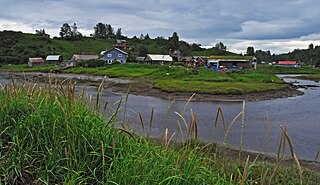
Ninilchik is a census-designated place (CDP) in Kenai Peninsula Borough, Alaska, United States. At the 2010 census the population was 883, up from 772 in 2000.
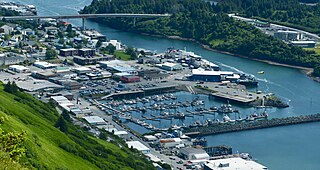
Kodiak is the main city and one of seven communities on Kodiak Island in Kodiak Island Borough, Alaska. All commercial transportation between the island's communities and the outside world goes through this city via ferryboat or airline. As of the 2020 census, the population of the city is 5,581, down from 6,130 in 2010. It is the tenth-largest city in Alaska.
Ouzinkie is a hamlet on Spruce Island in Kodiak Island Borough, Alaska, United States. At the 2010 census the population was 161, down from 225 in 2000.

Old Believers, also called Old Ritualists, are Eastern Orthodox Christians who maintain the liturgical and ritual practices of the Russian Orthodox Church as they were before the reforms of Patriarch Nikon of Moscow between 1652 and 1666. Resisting the accommodation of Russian piety to the contemporary forms of Greek Orthodox worship, these Christians were anathematized, together with their ritual, in a Synod of 1666–67, producing a division in Eastern Europe between the Old Believers and those who followed the state church in its condemnation of the Old Rite. Russian speakers refer to the schism itself as raskol (раскол), etymologically indicating a "cleaving-apart".
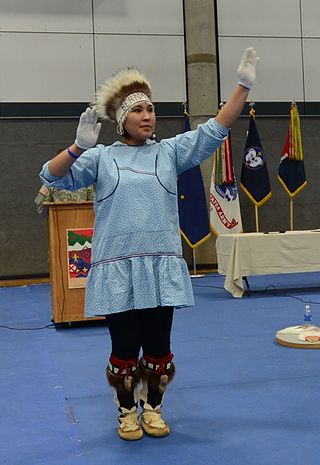
Alaska Natives are the Indigenous peoples of Alaska and include Russian Creoles, Iñupiat, Yupik, Aleut, Eyak, Tlingit, Haida, Tsimshian, and a number of Northern Athabaskan cultures. They are often defined by their language groups. Many Alaska Natives are enrolled in federally recognized Alaska Native tribal entities, who in turn belong to 13 Alaska Native Regional Corporations, who administer land and financial claims.
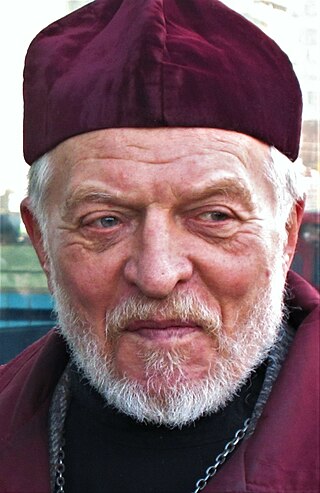
Gleb Pavlovich Yakunin was a Russian priest and dissident, who fought for the principle of freedom of conscience in the Soviet Union. He was a member of the Moscow Helsinki Group, and was elected member of the Supreme Soviet of Russia and State Duma from 1990 to 1995.
Eastern Orthodoxy in North America represents adherents, religious communities, institutions and organizations of Eastern Orthodox Christianity in North America, including the United States, Canada, Mexico, Central America, and the Caribbean. Estimates of the number of Eastern Orthodox adherents in North America vary considerably depending on methodology.

As of 2020, Alaska has a population of 733,391.
Archbishop Gregory was the Archbishop of Sitka and Alaska from 1973 to 1995, and author of books on Theology and Eastern Orthodoxy in North America in both Russian and English.
The old-settlers are the Russian settlers of the Russian North, Ural, Siberia, the Russian Far East and the former Russian America in the 11th – 18th centuries and their descendants. Among them, interethnic marriages, borrowing words from local languages and adopting the culture of Indigenous peoples were practiced.
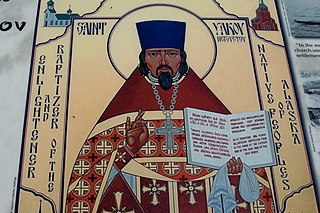
Jacob Netsvetov, Enlightener of Alaska, was an Alaskan Creole from the Aleutian Islands who became a priest of the Orthodox Church and continued the missionary work of Innocent for Alaska Natives. His feast day is celebrated on July 26, the day of his death.

Voznesenka is a small unincorporated community in the Kenai Peninsula Borough 23 miles northeast of Homer, Alaska, United States.

Michael James Oleksa was an American missionary priest of the Orthodox Church in America, who spent 50 years traveling, speaking, and writing about culture and race in Alaska.

Alaskan Creoles were the descendants of ethnic Russians in colonial Alaska, known as Russian Creoles, who inter-married with Aleut, Yupik, Eskimo, and other Alaskan Native peoples.